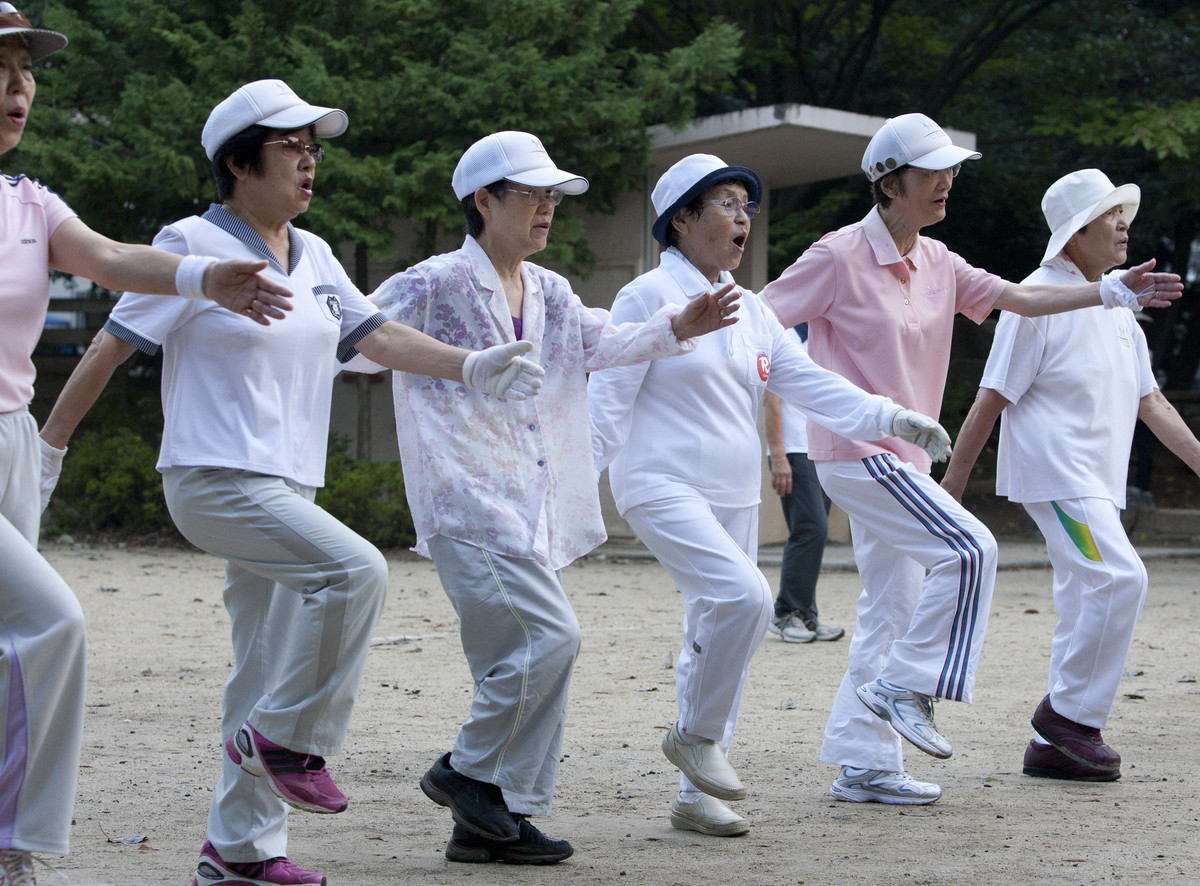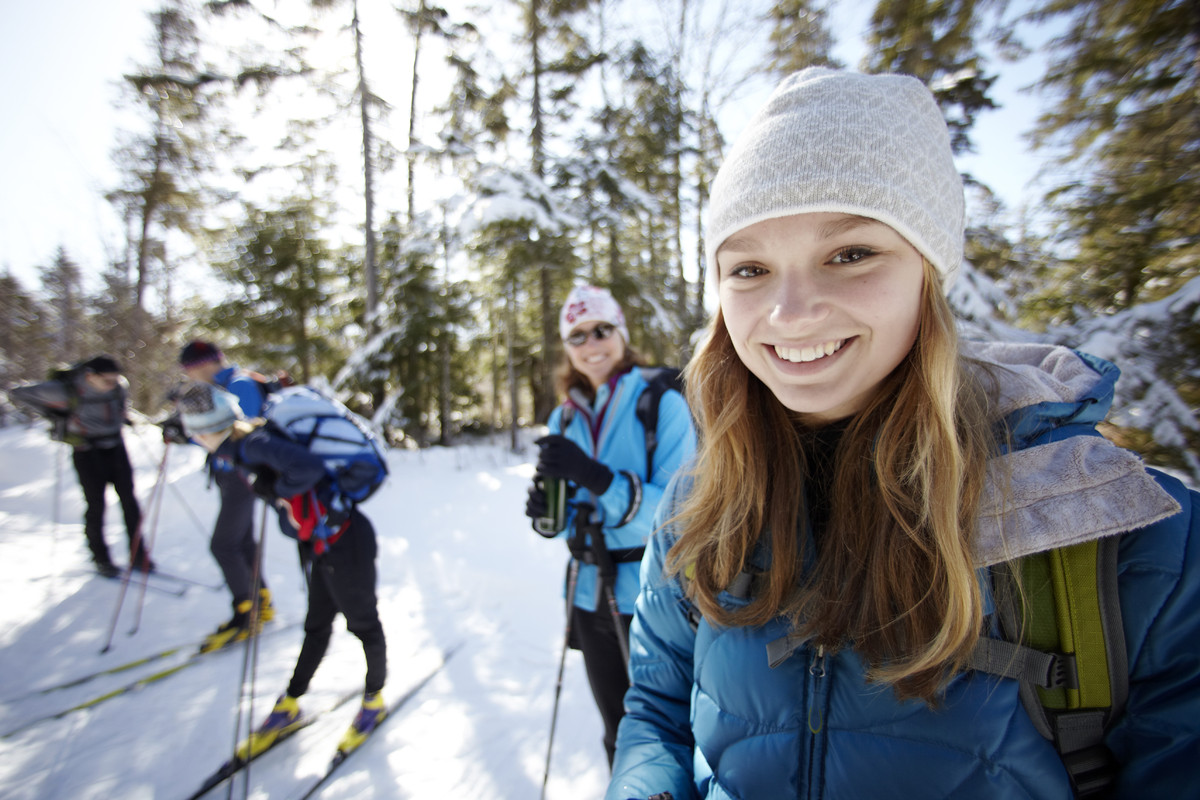-
Japan: Limbering Up Before Logging On
 Everyone in Japan recognizes the cheerful piano tune and knows what comes next: arms up! Japan’s national radio station plays 15 minutes of this exercise music every morning with cues to guide people through the routine. (The same series of calisthenics is taught in many schools.) “Radio exercises,” or organized group stretching, dates back to the 1920s in this country, and there are still around 28 million people performing versions of the routines daily. Primary school students, elderly people who gather in parks, and corporate suits who reach and bend in the office all recognize that stretching helps blood flow to the muscles, increases flexibility, and wakes up the body. You can follow along with the traditional Japanese routine, or you can try some of Dr. Oz’s favorite wake-up moves.
Everyone in Japan recognizes the cheerful piano tune and knows what comes next: arms up! Japan’s national radio station plays 15 minutes of this exercise music every morning with cues to guide people through the routine. (The same series of calisthenics is taught in many schools.) “Radio exercises,” or organized group stretching, dates back to the 1920s in this country, and there are still around 28 million people performing versions of the routines daily. Primary school students, elderly people who gather in parks, and corporate suits who reach and bend in the office all recognize that stretching helps blood flow to the muscles, increases flexibility, and wakes up the body. You can follow along with the traditional Japanese routine, or you can try some of Dr. Oz’s favorite wake-up moves.
-
Netherlands: Running Errands By Bike
 The Dutch use their bikes for just about everything — shopping, commuting, and bringing bunches of tulips to family and friends. Half the population of Amsterdam cycle daily (compared with less than 2 percent of Americans), and over 85 percent ride least once a week. In a research review published last year, Dutch academics concluded that the health benefits of bike riding far outweigh the potential risks of exposure to air pollution or the odds of getting in an accident. You, too, could be better off on your bike. Cycling to work allows you to replace your sedentary commute with a moderate-intensity workout. If that’s just not feasible (helmet head, sweat stains — we get it), consider attaching a basket and using your bike to do weekend chores. Pedaling with that extra weight will make your quads, hamstrings, and glutes work even harder.
The Dutch use their bikes for just about everything — shopping, commuting, and bringing bunches of tulips to family and friends. Half the population of Amsterdam cycle daily (compared with less than 2 percent of Americans), and over 85 percent ride least once a week. In a research review published last year, Dutch academics concluded that the health benefits of bike riding far outweigh the potential risks of exposure to air pollution or the odds of getting in an accident. You, too, could be better off on your bike. Cycling to work allows you to replace your sedentary commute with a moderate-intensity workout. If that’s just not feasible (helmet head, sweat stains — we get it), consider attaching a basket and using your bike to do weekend chores. Pedaling with that extra weight will make your quads, hamstrings, and glutes work even harder.
-
Singapore: Walking On Rocks
 In modernized sections of Singapore, as well as Malaysia, and Taiwan, it’s common to see mosaic pebble paths winding through parks, spas, and condo complexes. Architects didn’t create them to be contemplated like some Zen koan — the purpose was to encourage barefoot walking. The paths were designed using the concept of reflexology, where a therapist applies pressure to points in the foot that are supposed to correspond with organs and zones of the body. But the reflexology paths have other proven benefits. A study published in the journal Journal of American Geriatrics Society found that regular walking on cobblestones can reduce blood pressure and improve balance (it also gives your feet and calves an amazing stretch). You can get similar benefits by walking — not running — barefoot for 20 minutes over river, beach, or garden rocks (it may feel uncomfortable the first time, but your feet will adapt).
In modernized sections of Singapore, as well as Malaysia, and Taiwan, it’s common to see mosaic pebble paths winding through parks, spas, and condo complexes. Architects didn’t create them to be contemplated like some Zen koan — the purpose was to encourage barefoot walking. The paths were designed using the concept of reflexology, where a therapist applies pressure to points in the foot that are supposed to correspond with organs and zones of the body. But the reflexology paths have other proven benefits. A study published in the journal Journal of American Geriatrics Society found that regular walking on cobblestones can reduce blood pressure and improve balance (it also gives your feet and calves an amazing stretch). You can get similar benefits by walking — not running — barefoot for 20 minutes over river, beach, or garden rocks (it may feel uncomfortable the first time, but your feet will adapt).
-
Norway: Going On Tour With The Family
 Like many American families, Norwegians like to enjoy weekend excursions. But often, instead of packing the kids into the car and driving to the mall, they explore the local woods by foot (in the summer) or on cross-country skis (in the winter). No Scandinavian child is left behind: Even toddlers are bundled up for a trek that can take up most of the day. Convince your own family to try a Sunday hike or walk. Start with a 30-minute outing and work your way up to at least an hour. If you bring along a pair of Nordic walking poles, you’ll sculpt muscles in your shoulders, arms, and torso, as well as burn 20 percent more calories, found a study by the Cooper Institute in Dallas.
Like many American families, Norwegians like to enjoy weekend excursions. But often, instead of packing the kids into the car and driving to the mall, they explore the local woods by foot (in the summer) or on cross-country skis (in the winter). No Scandinavian child is left behind: Even toddlers are bundled up for a trek that can take up most of the day. Convince your own family to try a Sunday hike or walk. Start with a 30-minute outing and work your way up to at least an hour. If you bring along a pair of Nordic walking poles, you’ll sculpt muscles in your shoulders, arms, and torso, as well as burn 20 percent more calories, found a study by the Cooper Institute in Dallas.
- Cuba: Moving To The Beat
 While many Americans adore music but abhor dancing, Cubans see the two as inseparable. “It’s a part of the culture to respond physically to rhythm,” says Yvonne Daniel, a dance anthropologist and professor emerita of dance and Afro-American studies at Smith College in Massachusetts. She knows Cuban toddlers who can bang out an accompaniment to the rumba and dance instructors around the world who give special lessons on “Cuban motion,” the swaying of the hips that is key to Latin dances. Cubans don’t just dance at weddings; they shimmy around their homes, in school (where dance is often part of the curriculum), at clubs, and just about anywhere else they hear music playing. If novice contestants on “Dancing with the Stars” can shed impressive amounts of weight during a short stint (40 pounds for Kelly Osbourne; 100 for Kirstie Alley), that means dance-crazy Cubans are constantly burning calories. The easiest way to get your hips in on the action is to try Zumba, but rumba or salsa lessons, where you dance in street clothes (not Spandex) with a partner, may make you feel more confident about swiveling out on the floor whenever you hear music.
While many Americans adore music but abhor dancing, Cubans see the two as inseparable. “It’s a part of the culture to respond physically to rhythm,” says Yvonne Daniel, a dance anthropologist and professor emerita of dance and Afro-American studies at Smith College in Massachusetts. She knows Cuban toddlers who can bang out an accompaniment to the rumba and dance instructors around the world who give special lessons on “Cuban motion,” the swaying of the hips that is key to Latin dances. Cubans don’t just dance at weddings; they shimmy around their homes, in school (where dance is often part of the curriculum), at clubs, and just about anywhere else they hear music playing. If novice contestants on “Dancing with the Stars” can shed impressive amounts of weight during a short stint (40 pounds for Kelly Osbourne; 100 for Kirstie Alley), that means dance-crazy Cubans are constantly burning calories. The easiest way to get your hips in on the action is to try Zumba, but rumba or salsa lessons, where you dance in street clothes (not Spandex) with a partner, may make you feel more confident about swiveling out on the floor whenever you hear music.





